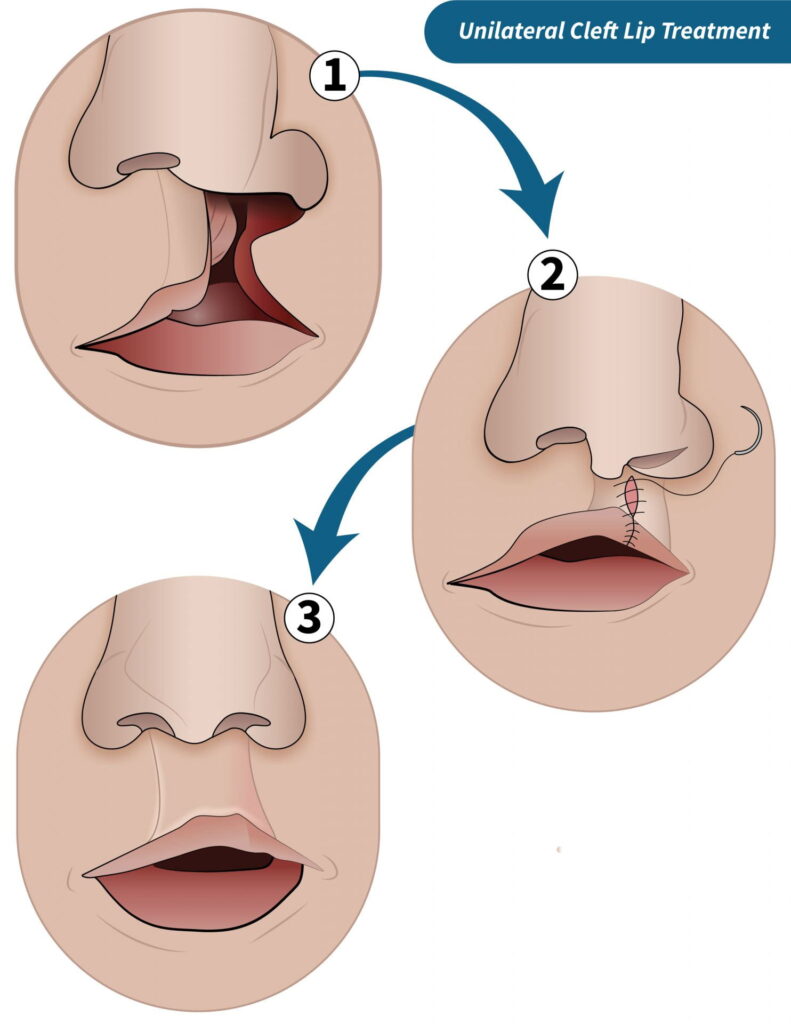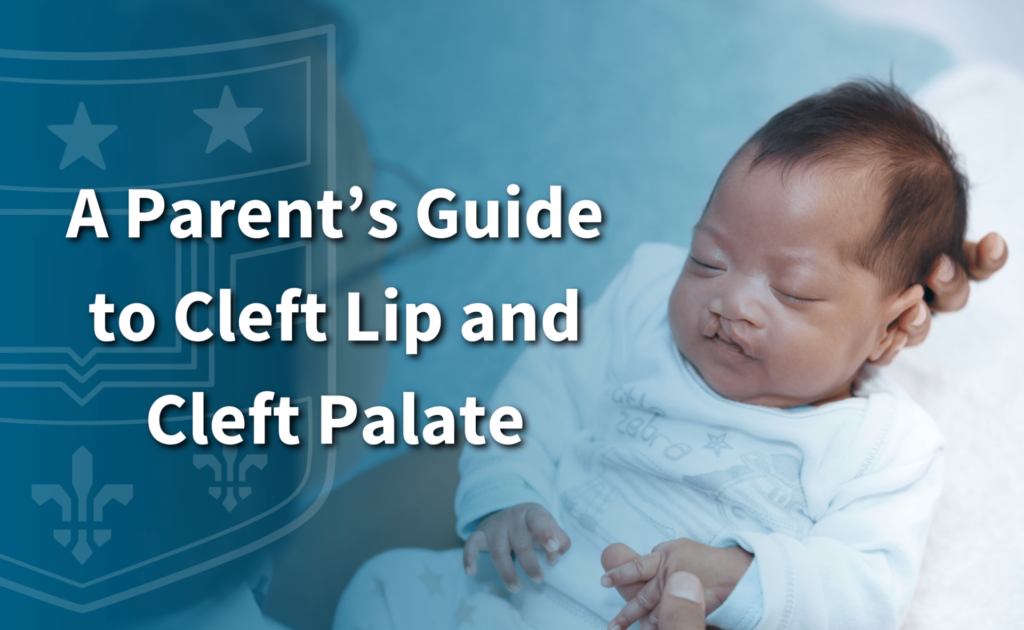Cleft lip and cleft palate are common conditions that develop before birth and can impact a child’s ability to eat, talk, and thrive. Understanding these conditions can help parents find care for their children born with cleft lip or cleft palate. Learn more about what these conditions are, how they are treated and when you should seek treatment for your child.
What is cleft lip? How is it different from cleft palate?
Cleft lip and cleft palate are both considered “craniofacial syndromes.” Craniofacial syndromes are conditions of the face and head that result from abnormal growth, genetics, disease or trauma. These conditions can begin early in development, and there is no single factor that causes a craniofacial syndrome. Cleft lip and cleft palate are very common. In fact, cleft lip is the fourth most common birth defect in the U.S.
In cleft lip, the tissue that makes up the lip does not join completely before birth, resulting in an opening in the upper lip. The opening can be different sizes, ranging from a small slit to a large opening that goes into the nose.
Cleft palate is when the tissue in the roof of the mouth does not join together completely before birth, resulting in an opening in the palate. The opening can vary in size and what areas of the palate it goes through. Sometimes, only part of the palate is open. Other times, the front and back parts of the palate are open.
How do these conditions affect my child?
Cleft lip and cleft palate can impact quality of life, depending on how severe they are. Children with these conditions often eat differently than other children. Different facial areas or cavities may not be separated, so special care will be necessary so food doesn’t go into areas it shouldn’t.
Babies and young children with these conditions can also have difficulty speaking or, in extreme cases, issues with their teeth. They also might have hearing problems and frequent or chronic ear infections. These problems need to be resolved quickly.
Often times, the social aspects of these conditions are also problems for children and adults who feel they appear or are treated differently based on their visible condition.
What procedures can help these conditions? Is cleft lip/cleft palate curable?
Services and treatment for children with cleft lip or cleft palate varies, depending on the severity of the cleft, the child’s age, the child’s needs and whether there are any other problems associated with the cleft.
Surgery is the most effective treatment for children with cleft lip or cleft palate to return form and function. Most children need at least one surgery, and these procedures can improve a child’s eating, hearing, breathing, and speech and language development.
Children may also need other types of treatments and services, such as special dental or orthodontic care and speech therapy.

When should I seek treatment for my child?
It is important to get treatment for kids as early as possible, especially when surgery is required. Surgeries can occur as early as three months and may be completed by one year. Secondary surgeries may be necessary later in life as the child grows if any new problems arise.
Early treatment with interdisciplinary medical care teams is the most effective treatment for children with cleft conditions. Early intervention for clefts helps babies before they develop reliance on these structures – for speaking, eating or other purposes – and will reduce developmental issues or delays.
Treating Cleft Lip and Cleft Palate at Washington University
Washington University pediatric plastic and reconstructive surgeons are leading experts on this condition and serve patients from the Cleft Palate and Craniofacial Institute at St. Louis Children’s Hospital. Surgeons at this institute are dedicated to kids and their families, working together with parents and accompanying them through the decision-making process.
Since its inception in 1978, the Cleft Palate and Craniofacial Institute team has treated more than 4,000 patients with cleft lip and cleft palate, in addition to another 2,800 with major craniofacial differences. The institute offers comprehensive evaluation, diagnosis and treatment for congenital (noticed at birth) and acquired neck and head injuries.
“The goal of management by our multidisciplinary team is to allow children to reach their maximum potential,” says Co-Director of the Cleft Palate and Craniofacial Institute Alison Snyder-Warwick, MD. “We are here to support children throughout their development, sometimes from the prenatal period all the way through physical maturity.”
Cleft lip and cleft palate treatment are only some of the procedures mastered at St. Louis Children’s Hospital. For fourteen years, St. Louis Children’s Hospital has ranked among the top 10% of all children’s hospitals by U.S. News & World Report. Our care teams are here to help you through this journey and throughout the healing process.
To schedule an appointment with a pediatric plastic surgeon, call 314-362-7388 or request an appointment online.
